NewsBeat
Government confirms amount at which automatic enrolment into pension triggered

The Government has confirmed that the annual earnings threshold for automatic workplace pension enrolment will remain at £10,000 for 2025-26.
Pensions minister Torsten Bell said automatic enrolment thresholds for 2025-26 will be maintained at their 2024-25 levels.
In a written statement he said: “It is important that AE (automatic enrolment) works for individuals, supporting those for whom it makes economic sense to save towards their pensions whilst also ensuring affordability for employers and taxpayers.”
Mr Bell said the Government is committed to looking at long-term steps it can take to further improve pension outcomes.
Ian Futcher, a financial planner at wealth manager Quilter, said: “Torsten Bell has unsurprisingly decided to maintain the automatic enrolment thresholds given the upcoming changes to employer national insurance contributions and the continued financial strain many people are suffering.
“While freezing the thresholds provides stability for both employers and employees, it is still a missed opportunity to drive higher contributions that could secure better retirement outcomes for millions of workers.
“The Government’s decision puts the onus on individuals to ensure they’re saving enough for their future.
“While AE has transformed pension saving, those relying solely on minimum contributions may find themselves falling short of the retirement they desire.”

The automatic workplace pension enrolment amount is reviewed annually. The £10,000 trigger has been kept in place for a number of years. Automatic enrolment obliges employers to enrol all workers into a qualifying workplace pension.
It comes amid concerns about the lack of knowledge about pensions.
More than half of people agreed between 25 and 54 say they feel nervous or unsure about their retirement finances, according to a survey carried out by NFU Mutual.
Fewer than one in 10 people were very confident they would be financially comfortable in retirement – dropping to just 6 per cent for women.
The country’s growing army of self-employed people could also be on track to increase pensioner poverty. Data from the Office for National Statistics shows that 15 per cent of all people in employment now work for themselves. That means they are not automatically enrolled into a pension scheme and that there’s no employer contributing to their savings
NewsBeat
Joker: Folie a Deux leads Razzie Awards nominations | Ents & Arts News

Joker: Folie a Deux leads this year’s Razzie nominations – five years after the first film led the nods for the Oscars.
The infamous Golden Raspberry Awards mark the films its voters believe to be the worst of the year, with the winners always announced the night before the Academy Awards.
While Joker received 11 Oscar nominations in 2020 – with a best actor win for star Joaquin Phoenix – the sequel was not so well received.
It is up for seven prizes including worst film at this year’s Razzies, with Phoenix and his co-star Lady Gaga also nominated in the acting categories.
Also up for worst film are sci-fi comedy Borderlands, starring Oscar winner Cate Blanchett; the critically panned Spider-Man spin-off Madame Web, starring Dakota Johnson; Francis Ford Coppola’s self-financed passion project Megalopolis; and Reagan, starring Dennis Quaid as the former president.
Other actors nominated for what the Razzies describes as “less-than-stellar star turns in 2024” include Jennifer Lopez (Atlas), Kevin Hart (Borderlands), and one of Donald Trump’s newly appointed apparent “ambassadors to Hollywood” Jon Voight.
Read more:
Netflix to raise prices for some subscribers
Birds of a Feather star diagnosed with dementia
Voight has a “near record” four titles (Megalopolis, Reagan, Shadow Land and Strangers) that have been included in consideration for his nomination for worst supporting actor, organisers said.
Meanwhile, in contention for worst director alongside Coppola for Megalopolis are SJ Clarkson (Madame Web), Todd Phillips (Joker: Folie a Deux), Eli Roth (Borderlands), and Jerry Seinfeld (Unfrosted).
The Razzies nominations come a day before the shortlists for the Oscars are announced.
More than 1,200 Razzie members – “movie buffs, film critics and journalists” from across the US and more than 20 other countries – voted for the nominees.
The winners will be unveiled on Saturday 1 March, with the Oscars ceremony taking place on Sunday 2 March.
NewsBeat
Duke of Sussex settles court case with The Sun's publisher


The Duke of Sussex has settled his High Court case against the publisher of The Sun.
Politics
The 10 countries that will be worst hit by Trump’s tariffs as shock graph shows surprising twist for Britain

Donald Trump announced a flurry of executive orders on his first day in office, but for now, at least, he has held off slapping universal tariffs on all imports.
Financial markets breathed a sigh of relief, but he did tell reporters in the White House Oval Office that he’s considering introducing a 25 per cent tariff on all products imported into the US from Mexico and Canada as soon as February 1.
Make no mistake: economic pain is coming down the pike as Trump threatens a trade war with countries that run large deficits with Uncle Sam.
The deficit-to-surplus ratio is not the only determining factor – geopolitics will play a role in who will be hit hardest too – but generally, Trump subscribes to the mercantilist mindset of might is right when it comes to international trade, so he will look to maximise exports and minimise imports to shrink America’s trade deficit.
GB News has ranked from highest to lowest in the countries that run the largest trade deficits with America and will therefore be slapped with the most punitive tariffs.
Who will be hit the hardest?
China, Mexico and Vietnam top the list, running trade deficits of around $300billion, $156billion and $109billion respectively.
Trump has pledged to impose an additional 10 per cent tariff on all imports from China, adding to the already existing tariffs.
This makes the total tariff on Chinese goods potentially as high as 60 per cent if all proposed tariffs are implemented.
The economic impact could be substantial, with previous studies indicating significant job losses and GDP reduction in China in response to similar tariff impositions.
The Chinese government has responded by asserting that no one wins in a trade war, hinting at potential retaliatory measures.

Donald Trump is expected to slap tariffs on its trading partners, with China, Mexico and Vietnam worst hit
Getty Images/ChatGPT
As Mexico’s economy is heavily integrated with that of the US, with approximately 83 per cent of its exports going across the border, the proposed 25 per cent tariff on all Mexican goods will significantly impact this trade relationship.
Analysts predict tariffs could plunge Mexico into a recession, depreciate its currency and drive up inflation.
Vietnam, which has one of the largest (and rising) trade surpluses with the US, is also exposed.
The US trade deficit with Vietnam reached $102billion in the first ten months of 2024 alone, an almost a 20 per cent increase on the previous year.
Vietnam has capitalised on spiralling US-China trade tensions by becoming a manufacturing hub for companies leaving China. However, this could backfire if Trump imposes tariffs.
Canada also makes the top ten, with Trump signalling plans to impose a 25 per cent tariff on its neighbour as soon as February 1.
Outgoing Prime Minister Justin Trudeau has emphasised Canada’s readiness to support American economic prosperity but cautioned against the imposition of tariffs, asserting Ottawa’s intent to retaliate if necessary.
Trudeau has alluded to the possible implementation of dollar-for-dollar matching tariffs in response to new US duties.
In order of highest to lowest, other countries running the largest trade deficits with America include:
- Germany
- Japan
- Ireland
- South Korea
- Taiwan
- India

Trudeau has alluded to the possible implementation of dollar-for-dollar matching tariffs in response to new US duties
REUTERS
Which countries will be shielded from the worst impact?
Netherlands, Hong Kong, and UAE run the largest trade surpluses with Uncle Sam, with surpluses of around $42billion, 23billion and 18billion respectively.
Trump will be less inclined to slap punitive tariffs on these countries as it could hurt American industries that benefit from these surpluses, such as aerospace, agriculture, and technology.
The UK will also be shielded from the worst as runs relatively large surplus with America.
In 2023, the UK had a trade surplus of £71.4billion with the US in goods and services, which increased to £72.1billion in the 12 months ending June 2024.
However, with trade worth over £300billion flowing across the Atlantic every year, Trump’s mooted plan to slap universal tariffs of 10-20 per cent on all US imports would still have a seismic impact on the UK.
Everything from Scotch whisky, automotive products, and pharmaceuticals would face higher costs.
Analysts from various think tanks, like the National Institute of Economic and Social Research (NIESR), have estimated that Trump’s tariffs could halve UK economic growth, reducing it from an already low projected 1.2 per cent to about 0.4 per cent in the year following implementation.
This is due to both increased costs for UK exporters and potential retaliatory measures from other countries.
The imposition of tariffs would likely increase inflation by pushing up the cost of imports, impacting consumer prices across various sectors. The Bank of England might then consider raising interest rates, which could further slow economic activity
This would put further pressure on Rachel Reeves, who is already struggling to tame rising borrowing costs and reverse sluggish growth.
NewsBeat
Lewis Hamilton drives Ferrari Formula 1 car for first time
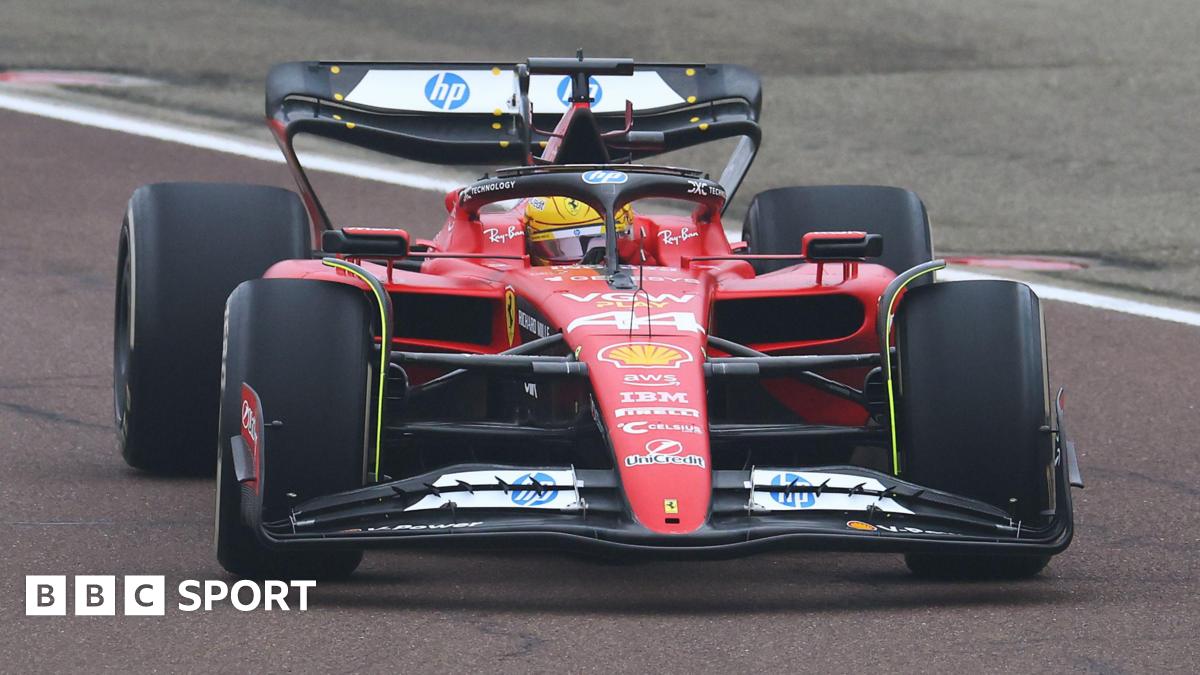
Lewis Hamilton is having his first experience of a Ferrari Formula 1 car at the team’s Fiorano test track.
The 40-year-old seven-time champion is testing a 2023 car as part of his acclimatisation work with his new team.
His test follows two days of work at the Ferrari factory in Maranello, of which the Fiorano track is a part.
Hamilton’s running was complete by shortly after 11:00 local time (10:00 GMT). Team-mate Charles Leclerc will drive the car in the afternoon as he begins to get back up to speed after the winter break.
Ferrari will release more information about Hamilton’s running later on Wednesday.
Hamilton will be limited to a total of 1,000km (621 miles) of what is known as testing of previous cars running by F1’s regulations.
The test will help him learn the way the Ferrari engine operates and allow him to build trust and working practices with his new race engineer Riccardo Adami and the rest of the team.
Adami worked with Carlos Sainz for the last four years and before that four-time champion Sebastian Vettel.
NewsBeat
False claim that Southport trial was deliberately timed for Trump inauguration

A former chairman of the Conservative Party has made the bizarre claims that the beginning of Southport attacker Axel Rudakubana’s trial was scheduled on the same day as Donald Trump’s presidential inauguration as “a calculated and cynical move by the Labour Government to ‘bury bad news’ behind international headlines”.
The claim echoes other social media posts over recent months which make various claims about the timing of both events on the same day.
The claim made by Sir Jake Berry can be proven as false as the trial date is set by the courts, not the Government. The trial was scheduled months before Mr Trump’s victory in the US presidential election.
The trial date was set for January 20 2025 during a hearing on August 1 2024 by Honorary Recorder of Liverpool Andrew Menary KC – the judge who allowed Rudakubana’s name to be published despite him being under 18 at the time he was charged.
This was more than three months before the US presidential election was held on November 5.
While it was not known at the time the trial date was set that Mr Trump would become the next president, the US inauguration ceremony always takes place on January 20, or on January 21 if the 20th is a Sunday.
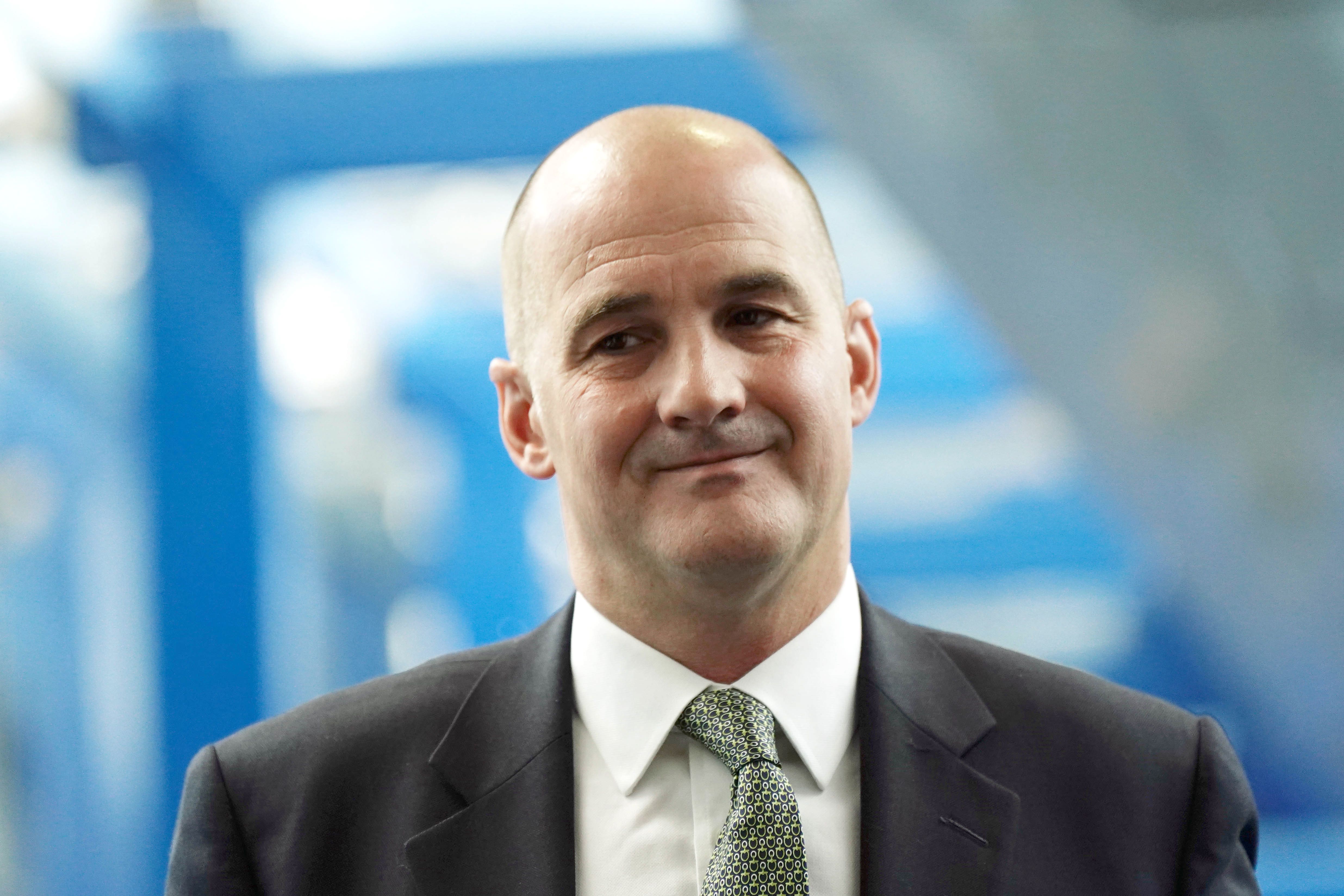
Trial schedules are set by the courts, never by the Government.
The Government’s website states: “If the defendant pleads not guilty to the crime the court will need to arrange a trial to receive evidence about what happened. At the first hearing the court will ask for information about the case, set a trial date and make court orders (‘directions’) about getting the case ready for trial.”
Not guilty pleas were entered on Rudakubana’s behalf at Liverpool Crown Court on December 18 2024. His trial was expected to last four to six weeks.

Because Rudakubana pleaded guilty on the morning of January 20 the trial did not go ahead as planned.
Here is a timeline of what was known when about Southport killer Axel Rudakubana:
– 2019
Axel Rudakubana becomes known to a range of local agencies due to anxiety, social isolation and challenging behaviour.
In October he takes a knife to school, and in December attacks another child with a hockey stick.
He receives a youth justice referral order for the assault – a measure where juveniles who plead guilty to their first offence are placed under supervision to try to stop them reoffending – and completes this in 2021.
Between December 2019 and April 2021 he is referred to the government counter-extremism scheme Prevent three times.
He is aged between 13 and 14.
– October 2019 to May 2022
Lancashire Police have a series of interactions with the teenager, including being called to his house five times.
He is assessed for an autism spectrum disorder, and given mental health and educational support.
– February 2023
Rudakubana has stopped engaging with mental health workers, is struggling to attend school and has anxiety that makes him unwilling to leave his house.
– Monday July 29 2024
The teenager, then aged 17, murders Alice da Silva Aguiar, nine, Bebe King, six, and Elsie Dot Stancombe, seven, and injures eight other children and two adults in a knife rampage.
Within hours, just after 5.15pm, Merseyside Police releases a statement confirming “that the incident is not currently being treated as terror-related”, and this remains the case to date.
The force also says that the suspect they have arrested was born in Cardiff, amid false rumours online that the attack was carried out by an asylum seeker.
– Tuesday July 30
Rudakubana’s home in Old School Close, Banks is searched by police, and an unknown substance is found in his bedroom.
The search is halted and the substance is sent to the Defence Science and Technology Laboratory (Dstl) in Porton Down near Salisbury for analysis.
Separately, that evening there is both a peaceful vigil for the girls in Southport, and unrest outside the town’s mosque.
– Wednesday July 31
Rudakubana is charged with three counts of murder, 10 of attempted murder, and one of possession of a knife in a public place.
Demonstrators gather in Whitehall, London, for an “Enough Is Enough” protest.
Flares and cans are thrown at police and more than 100 people are arrested.
Disorder also breaks out in Hartlepool, County Durham, and Aldershot, Hampshire.
– Thursday August 1
Lab results suggest that the unknown substance is ricin.
This is a biological toxin estimated to be 6,000 times more poisonous than cyanide.
It can be fatal when inhaled, ingested, injected or swallowed.
– Friday August 2
The substance is confirmed by the Dstl to be ricin.
The form the poison was found in was deemed to be “low to very low risk”.
– Unconfirmed date in September
Merseyside Police pass a file of evidence to the Crown Prosecution Service (CPS) concerning the ricin and an al Qaida training manual found in Rudakubana’s possession.
– October 29
The additional charges against Rudakubana over the ricin and the al Qaida document are publicly announced.
He is charged with possessing the document between August 29 2021 and July 30 2024.
The Government insists that the timing of the decision to announce the charges was purely a decision for the CPS, amid calls for more information to be released by politicians including Kemi Badenoch, Robert Jenrick and Nigel Farage.
The ricin charge required the authorisation of government officers the attorney general or solicitor general to proceed, and the BBC reports that senior government figures had been told about the new charges a few weeks before.
In January 2025 Prime Minister Sir Keir Starmer said he had been updated about the case, but was unable to reveal any details publicly as it would have risked causing a future criminal trial to collapse.
The Attorney General’s Office is yet to confirm when the CPS applied for approval for the additional charge under the Biological Weapons Act and when the government’s law officers granted approval but it is understood this process took place within days.
– Monday January 20 2025
Rudakubana speaks for the first time at a court hearing and pleads guilty to all charges, paving the way for full details about the case to be revealed now that there will be no jury trial.
The referrals to Prevent are revealed publicly for the first time, along with details of his obsession with violence and attempt to travel to his school the week before the murders.
The debate over whether information about his background should have been released earlier is reignited.
– Tuesday January 21
Home Secretary Yvette Cooper tells the Commons that Rudakubana had admitted carrying a knife 10 times, and that he had bought the murder weapon on Amazon despite having a previous conviction for violence over the hockey stick incident and being underage.
NewsBeat
Evidence of culprits found in Lichfield’s huge flytipped waste pile
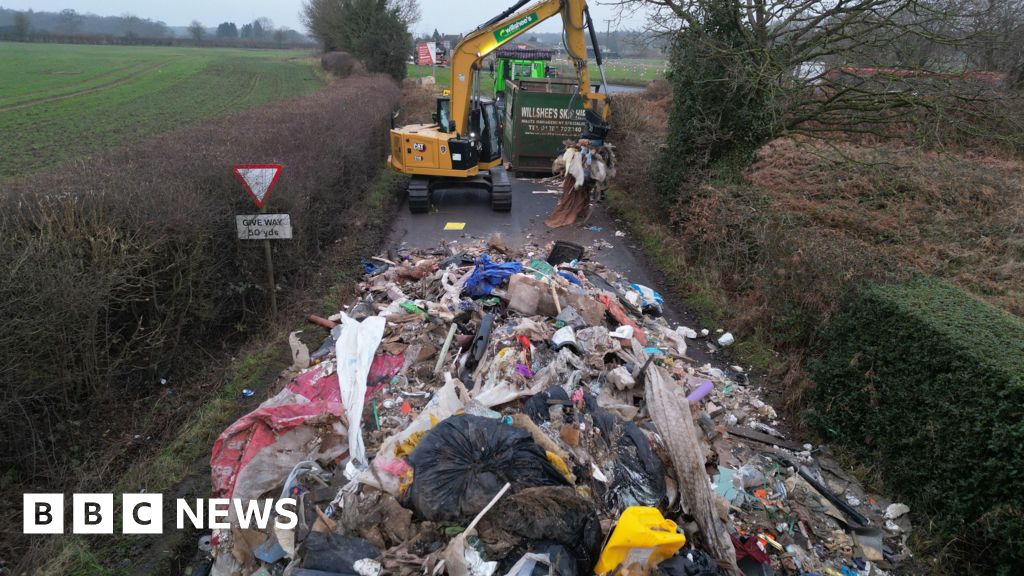
 PA Media
PA MediaInvestigators searching for culprits who illegally dumped a huge pile of waste on a rural Staffordshire road say inquiries are “pointing in one direction”.
“We’ve found a fair bit of evidence in there,” environmental protection manager Jack Twomey said, confirming they were following several leads in the inquiry.
“As the waste is being removed, we’ve been going in there and trying to search through the core of the waste to see if we can find more.”
The mountain of rubbish was discovered at about 06:00 GMT on Monday on Watery Lane in Lichfield, leaving residents cut off and business owners unable to reach their premises.
Construction of a housing estate at the other end of Watery Lane was already causing access problems.
Lichfield District Council said it would find the culprits and hold them responsible for the flytipping, which had appeared overnight.
Under section 33 of the Environmental Protection Act 1990, people convicted of the offence face an unlimited fine and, in serious cases, a jail sentence.
Speaking on Monday, councillor Phil Whitehouse, cabinet member in charge of waste, said he had been “completely shocked” by the amount dumped and that it appeared to have been a calculated operation.

Business owner Natalie Farkas told the BBC the illegal dumping had blocked firms’ only access to their premises, exacerbating problems caused by the existing road closures.
Companies have lost two days of trade as a result of the flytipping, she said.
The firms had already seen trade drop by about 40%, because of the ongoing disruption caused by the housing estate’s construction.
“It’s just been unbearable” she said. “I’ve been trading for 30 years and this is the most stressful it’s ever been,” said Ms Farkas.
“I’ve been through four recessions and I’ve always managed to keep my head in and keep my business going.”
Paul Shaw, managing director for Redrow Midlands, said the housing developer has offered to support the council with cleaning-up the illegal waste as well as supporting with future preventative measures.
The company has also temporarily opened an access road through their development for local residents and businesses.
Mr Shaw also said the part of Watery Lane closed because of the housing estate’s construction, was due to reopen in April.
Contractors have been on-site since 07:00 GMT, the council said.
Politics
Ministers oust CMA chair after Chancellor called for regulators to ‘tear down’ red tape

Labour ministers have ousted the chairman of the UK Competition and Markets Authority (CMA) after Rachel Reeves demanded that regulators “tear down” red tape.
Marcus Bokkerink’s departure from the watchdog was announced by the Department for Business & Trade last night after it deemed that the organisation was not sufficiently focused on growth.
Business Secretary Jonathan Reynolds thanked Bokkerink for his time at the watchdog, saying: “We want to see regulators including the CMA supercharging the economy with pro-business decisions.”
Doug Gurr – who used to work for Amazon UK and is a director of the Natural History Museum – has taken on the role in the interim.
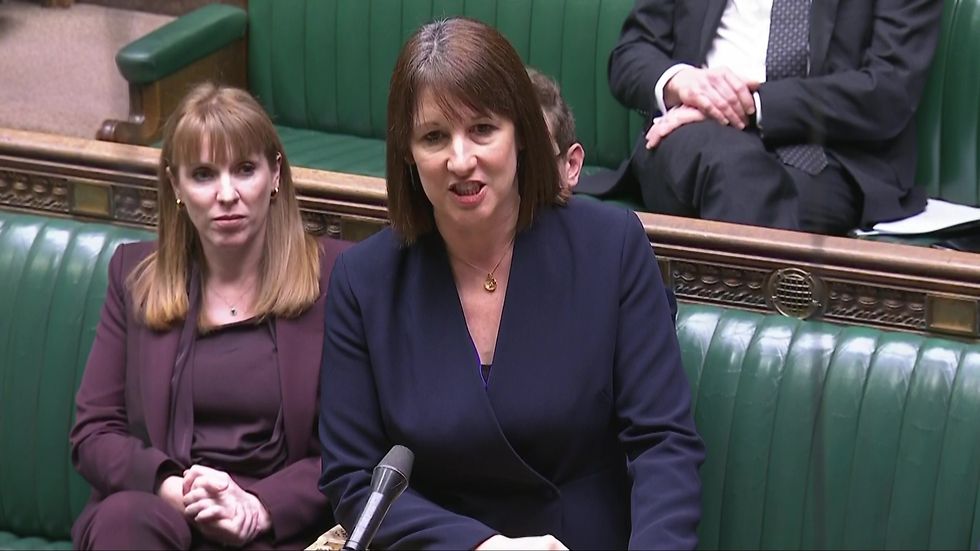
Rachel Reeves instructed top bosses of railways, water, energy and aviation firms to “tear down regulatory barriers that hold back economic growth”
PA
Labour is currently pushing authorities to support its economic agenda on growth, sparking concerns surrounding the consequential effect on industry standards and consumers.
Reeves instructed top bosses of railways, water, energy and aviation firms to “tear down regulatory barriers that hold back economic growth” at a joint meeting hosted by the Labour Chancellor and Business Secretary last week.
It followed previous instructions from the pair that the regulators must bring forward a list of reforms to support growth and the Government – 17 of which would be subsequently scrutinised by ministers.
Labour has said that regulators must work towards developing environments that “unlock innovation and investment”.
LATEST DEVELOPMENTS:
Bokkerink – who used to work for Boston Consulting Group – wrote to the Government last week to inform them that the CMA was “fully supportive of the government’s focus on driving economic growth and stands with you in this critical shared endeavour”, setting out five proposals.
Nevertheless, business leaders have complained that the body has been too interventionist, as it previously came under fire for its handling of Microfsoft’s $69billion acquisition of Activision Blizzard.
The deal was later approved after the CMA blocked it at first, leading to a 21-month-long process.
More recently, the CMA started an investigation into the search and search advertising markets last week, producing a report that quoted a Government official saying that the body’s “performance has not been good enough”.
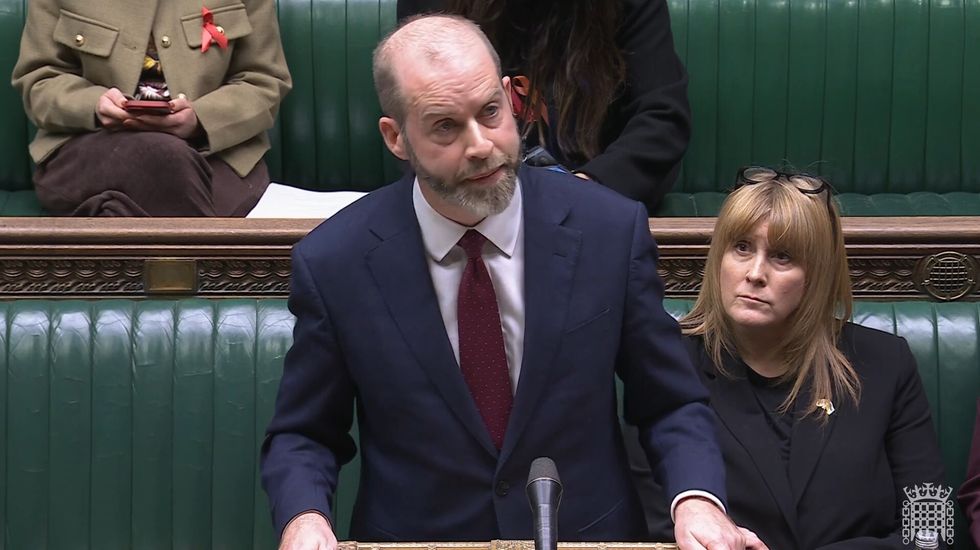
Business secretary Jonathan Reynolds thanked Bokkerink for his time at the watchdog
PA
There was also some “frustration about this across the board from business”, according to the same source.
Sarah Cardell, chief executive of the CMA, said: “I would like to thank Marcus for his leadership and support over the last two years.
“The CMA has a critical role to play supporting the government’s growth mission.
“I welcome the appointment of Doug Gurr as the CMA’s new interim chair and look forward to working closely with him as we drive growth, opportunity and prosperity for the UK.”
NewsBeat
Storm Eowyn map: Where and when snow and 90mph winds will hit UK after Met Office weather warnings issued
Storm Eowyn is set to bring strong winds across the entire country, potentially putting lives at risk, the Met Office has warned.
Gusts of more than 90mph could cause power cuts, travel disruption and damage to buildings as Storm Eowyn threatens the UK.
There could also be a danger to life caused by flying debris.
The UK can expect the arrival of unsettled conditions on Thursday, which will see strengthening winds and heavy rainfall in western parts of the country overnight, the forecaster said.
It follows the “benign” grey, cloudy weather and outbreaks of rain seen by much of the country earlier in the week.
The Met Office has issued a yellow wind warning from midnight on Friday across most of the UK, including the south-west of England, the Midlands, northern England, Northern Ireland and Scotland, as the storm sweeps through the country.

The disruption is not expected to affect inland areas in the south-east of the country, including London, but will hit the coast, with the warning extending to Brighton and Dover.
The forecaster issued an additional warning from midnight on Saturday to late afternoon that day across Scotland and the far north of England.
Met Office spokeswoman Andrea Bishop said: “Storm Eowyn will bring a period of very unsettled, potentially disruptive, weather to the UK through Friday and into Saturday.
“Pronounced ‘Ay-oh-win’, the system will begin to influence the UK’s weather on Friday, with strengthening winds initially in north-western parts of the UK with accompanying heavy rainfall.”
Storm Eowyn will bring a spell of strong south-easterly to south-westerly winds, with gusts reaching 50-60 mph inland and 70-90 mph along coasts.
The wind strength is expected to ease gradually through Saturday from the south.

Met Office deputy chief meteorologist Mike Silverstone said: “The strongest gusts are likely to be felt across parts of Northern Ireland, northern England, north-western Wales and western Scotland, where exposed sites could get gusts in excess of 80mph, which has the potential to cause impacts for those in these areas.
“There will also be some heavy rain, bringing some unpleasant conditions to end the week.”
The change to conditions is being caused by a powerful jet stream pushing low pressure across the Atlantic and towards the UK, following a recent cold spell over North America, the Met Office said.
The forecaster advised securing loose items outside homes, including bins, garden furniture, trampolines and sheds, and gathering torches and batteries in case of any power cut.
Those travelling in this “disruptive spell of weather” are urged to be cautious, as road, rail, airports and ferries are likely to be affected.
Another area of low pressure could bring further wet and very windy weather across the UK by Sunday.
There is the potential for further weather warnings over the weekend and throughout next week, the Met Office added.
Politics
The Reluctant Steamroller in the White House

Just hours into his second presidency, Donald Trump was already bulldozing congressional Republicans.
He granted clemency to some 1,500 Jan. 6 offenders, some of them convicted of violent assaults. He flouted a bipartisan TikTok ban, ordering it to remain unenforced. And he moved to cancel some of his predecessor’s energy programs over the pleadings of some in the GOP who wanted him to wait — to name just a few of the ways he undercut members of his own party.
A day later, it was as if a switch had been flipped.
In a meeting Tuesday with top GOP leaders, he didn’t move to settle key strategic disputes over raising the debt limit and passing the party’s big domestic policy package. Top leaders from the House and Senate left the White House and gave reporters completely contradictory accounts of how his agenda would be passed.
In other words, Trump is already showing his split-screen approach to congressional relations — one that, so far, is more concerned with using his political muscle to perform acts of dominance than to settle the intramural disputes that are holding up his agenda.
The past two days underscore how Trump and his team view Capitol Hill, informed by his previous four years in office, and the four subsequent years he spent climbing back: Republicans will eventually fall in line with whatever he wants, they believe, so why hold back?
“The sooner these guys recognize that it’s the president that kept their House majority and their Senate majority, and the sooner they realize it’s the president that has the will of the people — not them — the sooner they will be able to live a productive life,” one Trump insider granted anonymity to discuss relations with Congress told me recently.
“At the end of the day, he’s the one with the mandate, and they know it,” said another.
There was immediate evidence that such a read is absolutely correct.
Faced with questions about Trump’s Jan. 6 pardons, most GOP lawmakers opted for a delicate tap dance. Many deflected attention to predecessor Joe Biden’s pardons of family members. Others quickly dusted off the old first-term playbook: I didn’t see the tweet/comment/executive order.
“I haven’t seen the list,“ Speaker Mike Johnson told my colleague Meredith Lee Hill. “I haven’t had a chance to evaluate it.”
And when Trump essentially flipped them the bird on TikTok — putting off dealing with something they’ve described for years as a major national security issue — nary a squawk was heard. Johnson and Senate Intelligence Chair Tom Cotton (R-Ark.) spoke out Sunday to reiterate their support for the nine-month-old ban, only to be neutered a day later.
Same goes for Trump’s first-day decision to gut Biden’s electric vehicle mandates. Hill leaders wanted to repeal it themselves so they could book the savings and use them to offset the cost of tax cuts. Trump bullied forward anyway.
He even burned political capital on a molehill of a mountain: re-renaming Denali to Mount McKinley over the objections of Alaska Sens. Lisa Murkowski and Dan Sullivan.

A more traditional politician might consider it risky to wildly alienate members of your own party (especially a known swing vote like Murkowski) when much of your agenda requires congressional approval — doubly so when you have a House majority even narrower than in the Senate.
Not so for Trump, obviously. Yet the alpha-male power plays suddenly evaporate when it comes to settling disputes among Republicans about his own agenda.
The chambers remain on diverging paths when it comes to passing border, energy and tax measures, with the House pushing one vote on one massive bill while the Senate wants to split it in two. Same for the debt limit: Include it in a party-line budget reconciliation bill? Or cut a deal with Democrats?
Some Republicans were hoping Trump would use his audience with Hill leaders at the White House on Tuesday to crack the whip on those questions and others. That doesn’t seem to have happened: One senior Republican aide we spoke to afterward couldn’t hide his disappointment; Trump continued to waffle rather than provide clarity.
That’s despite complaining in the meeting, as he often does, about how Democrats always stick together and Republicans instead bicker and fracture. He insisted on unity but didn’t do much to facilitate it.
Which is partly why Trump’s whatever-I-want posture early on is raising so many eyebrows among some Republicans. The president, they believe, will have to spend some of the political capital he seems intent on burning now to get his agenda passed later.
A key test is at hand, with some of Trump’s most controversial nominees headed toward confirmation votes that will force some Senate Republicans to eat a “shit sandwich,” as one Republican aide told me on Inauguration Day.
Pete Hegseth, his pick for Pentagon chief, is teed up for a vote within days despite a late-breaking report that he’d made an ex-wife “fear for her safety.” (The woman denied she’d been physically abused.) And many senators remain uncomfortable with his choice of Tulsi Gabbard for director of national intelligence, with her isolationist views and policy flipflops.
They haven’t even gotten yet to his plans for tariffs — not only on China but allies like Mexico and Canada — potential levies that have given traditional pro-business Republicans heartburn for months.
If Republicans fall in line behind Hegseth, Gabbard and tariffs — as most now expect — it will be proof positive that Trump’s steamroller approach is working.
“From his end, he’s doing what he said he would do, so this notion that we’re going to have any ability to stop him from doing what he feels is right is laughable,” said one senior GOP aide. “It’s just not happening.”
So who cares if he isn’t sweating the small stuff?
NewsBeat
What’s it like to be on The Traitors?

 BBC/PA
BBC/PAWarning: This article contains spoilers for series three of The Traitors.
A contestant has said appearing on TV show The Traitors was “mentally exhausting”.
Reverend Lisa Coupland, 62, from Truro in Cornwall has been in Series 3 of the BBC One programme, where contestants known as “faithfuls” work to identify a group of imposters, or “traitors”, within their ranks.
Those traitors attempt to secretly “kill off” the others while remaining undetected and directing suspicion elsewhere.
Mrs Coupland, who did not reveal her profession until episode five, said she saw herself as being “undercover” rather than lying when she took off her dog collar and kept quiet about her faith.
 BBC/STUDIO LAMBERT
BBC/STUDIO LAMBERTShe said it was “quite a strange experience” to keep her faith “under wraps”.
“I like to think about it more as going undercover rather than actually lying – I mean, [crime-solving TV priest] Father Brown can do it, so why can’t I?”, she said.
The Anglican priest was eliminated in episode nine – or murdered in the language of the show.
Mrs Coupland, a fan of murder mysteries and whodunits, said: “It was a game and I think we have to put that into context, really.”
Talking to BBC Radio Cornwall, she said playing the game was “relentless”, adding: “Your brain is being pulled in so many different directions.
“You’re looking at people for the slightest nuance and changes in their behaviour.
“Mentally, it’s exhausting because all the time you’re trying to work things out.”
Mrs Coupland, who was a guest at a fellow contestant’s wedding last year, said she did have moments where she sat back and “just enjoyed the experience… otherwise you just don’t have a moment’s peace”.
She said she was “shattered” after long filming days, so “sleeping wasn’t a problem for me”.
She said she used the evenings, at a private lodge, to catch up with church admin and “come down, relax, and hold everything up to God”.
“I’m probably more adaptable than I thought I was, but probably not as fit as I thought I was.”
Episodes of The Traitors are now on BBC iPlayer, and the series airs on BBC One at 21:00 GMT on Wednesday, Thursday and Friday.
-

 Fashion8 years ago
Fashion8 years agoThese ’90s fashion trends are making a comeback in 2025
-

 Entertainment8 years ago
Entertainment8 years agoThe Season 9 ‘ Game of Thrones’ is here.
-

 Fashion8 years ago
Fashion8 years ago9 spring/summer 2025 fashion trends to know for next season
-

 Entertainment8 years ago
Entertainment8 years agoThe old and New Edition cast comes together to perform You’re Not My Kind of Girl.
-
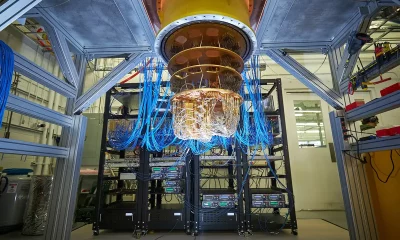
 Sports8 years ago
Sports8 years agoEthical Hacker: “I’ll Show You Why Google Has Just Shut Down Their Quantum Chip”
-
Business8 years ago
Uber and Lyft are finally available in all of New York State
-
Entertainment8 years ago
Disney’s live-action Aladdin finally finds its stars
-
Sports8 years ago
Steph Curry finally got the contract he deserves from the Warriors
-
Entertainment8 years ago
Mod turns ‘Counter-Strike’ into a ‘Tekken’ clone with fighting chickens
-
Fashion8 years ago
Your comprehensive guide to this fall’s biggest trends









You must be logged in to post a comment Login